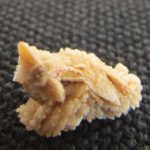
The passage rate for ureteral stones less than 9 mm in diameter did not differ significantly between tamsulosin and placebo recipients, study finds.
Medical expulsive therapy using the alpha blocker tamsulosin does not aid passage of ureteral stones less than 9 mm in diameter, according to study findings published online in JAMA Internal Medicine.
In the double-blind STONE (Study of Tamsulosin for Urolithiasis in the Emergency Department) trial, investigators randomly assigned 512 emergency department patients (mean age 41; 27% female; 23% non-white) to 0.4 mg daily tamsulosin or placebo for 28 days. Stone passage rate did not differ significantly between groups (50% tamsulosin vs 47% placebo), Andrew Meltzer, MD, of George Washington University in Washington DC, and colleagues reported. In addition, the investigators observed no significant between-group differences with respect to time to stone passage, return to work time, analgesic use, hospitalization, need for surgery, or repeat visit to the emergency department.
For the study, patients could have stones in any part of the ureter. Stone size, location, and passage were confirmed by computed tomography.
Current guidelines by the American Urological Association recommend alpha blockers for ureteral stones 10 mm or less in diameter.
“Although tamsulosin may still play a role in medical expulsive therapy for larger stones, guidelines that recommend tamsulosin for ureteral stones may need to be revised,” Dr Meltzer stated.
Adverse events were similar between groups, but a greater proportion of men receiving tamsulosin experienced abnormal ejaculation.
In an accompanying editorial, Philip Dahm, MD, and John Hollingsworth, MD, MS, of the University of Michigan, agreed that guidelines need to change. They believe, however, tamsulosin should still be considered for ureteral stones larger than 5 mm in diameter based on other research and the small mean stone size in the current study (3.8 mm). Investigators in the current study performed exploratory analyses but did not find any benefit from tamsulosin based on stone location and/or size.
At the 2018 European Association of Urology Congress in Copenhagen, Denmark, researchers reported on a study showing that tamsulosin did not improve the rate of spontaneous stone passage (SSP) among patients with acute ureteric colic. As part of the MIMIC study, Taimur T. Shah, MBBS, MRCS, of University College London, and colleagues collected data from 4181 patients admitted with acute ureteric colic. Of these, 3127 (75%) were discharged with conservative management, and 2516 of them (80%) had confirmed SSP. In this group, 952 patients (44%) were prescribed tamsulosin and 1234 (56%) were not. The rate of SSP was 78% and 72%, respectively. On multivariable analysis, which included adjustment for stone size and position, the investigators found no significant difference in SSP.
Dr Meltzer told Renal & Urology News, “We will likely have to change the guidelines regarding which groups of patients should receive the medication. There is still a possibility that tamsulosin is effective in certain subgroups.”
References
Meltzer AC, Katzen Burrows P, Wolfson AB, et al. Effect of tamsulosin on passage of symptomatic ureteral stones. JAMA Intern Med. doi:10.1001/jamainternmed.2018.2259 [Published online June 18, 2018]
Dahm P and Hollingsworth JM. Medical expulsive therapy for ureteral stones—Stone Age medicine. JAMA Intern Med. [Published online June 18, 2018]





